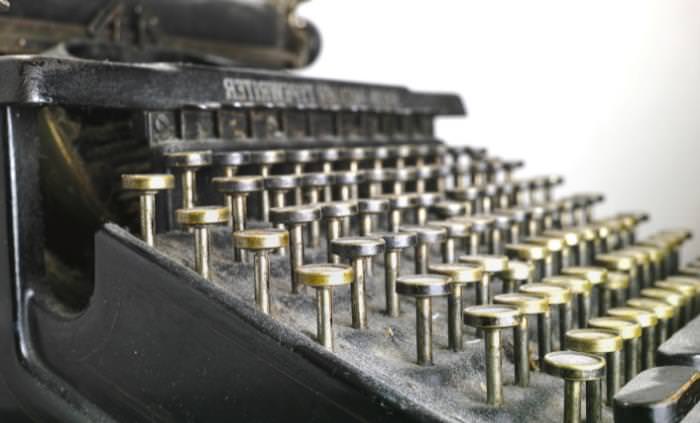

Born 1892, Mathers held up quite an impressive literary career in translation, literary criticism and praised poems. However, his greatest success was as a crossword constructor for the British newspaper The Observer. This was a position he held from 1926 until his death in 1939. He was the first crossword setter to publish cryptic crosswords exclusively, abandoning the classic crossword altogether. He considered those much too boring. His clues were anything but boring; he used knock-knock jokes and rhymes in his cryptic clues.
While he didn't invent cryptic crosswords, he is responsible for other innovations in the field. According to Mental Floss, "If you’ve ever solved a barred-grid style of puzzle, which uses thick black lines rather than black squares to indicate where an answer ends, you can thank (or perhaps blame) Mathers, who devised the format."
Occasionally, Mathers chose to publish his poems and puzzles under false names, such as "J. Wing", "John Duncan", and "Torquemada"- after the Grand Inquisitor of the Spanish Inquisition, Tómas de Torquemada. As for the latter, it remains unclear to this day why he chose this name, but it made him a worldwide phenomenon.
When, in 1934, the literary puzzle Cain's Jawbone was published, there was a prize of £25, which is today's equivalent of £1800, or about $2400. At the time, only 2 people managed to solve it. As their answers arrived the same day, one was paid fully, and the other was paid a partial sum as a consolation prize. The solution wasn't recorded and the puzzle was buried under the sands of time for about 80 years.
The 100-page story of a murder mystery has mistakenly been printed in the wrong order. It's up to the reader to arrange them correctly and solve the murder mystery and find 6 murder victims and their killers. Mathers didn't make this too easy: every page begins with the first word of a new sentence.
If the story of Cain's Jawbone tickles your fancy and you'd like to try your luck, there's still one more thing to keep in mind. This puzzle was written almost a century ago, and many of the language and cryptic clues have references to a culture long forgotten. For example, take the following clue from one of Mathers' puzzles:
"Creeper formed of Edmund and his son Charles".
In order to solve this one, you'd have to be familiar with Edmund and Charles Kean, who last performed together in a production of Othello in 1833. Only then will you be able to rearrange the letters of the Keans, to find the creeper you're looking for: a snake.
* * *
So far we've been rambling on the author and the puzzle. We mentioned at the beginning of the article that there are only 4 people in history that managed to solve this puzzle, but only spoke about the 2 first. What about the remaining 2?
The story of our first contemporary solver begins with Patrick Wildgust, a curator at Shandy Hall. This is a museum for literature that used to be the home of Laurence Sterne, a 16th-century experimental novelist. What do we mean when we say experimental? Well, his The Life and Opinions of Tristram Shandy, Gentleman is a book full of not only controversial humor and digressions, but also some visual gimmicks such as random blank pages, blacked-out pages, and irregular page numbering.
The library of Shandy Hall is also home to B.S. Johnson’s The Unfortunates, that's composed of a box with 150 unbound pages that can be read in any order, and another book called 100,000,000,000,000 Poems by Raymond Queneau, which contains ten 14-line sonnets, printed on pages cut into 14 strips to allow readers to arrange them into infinite variations. There's also, of course, Padgett Powell’s The Interrogative Mood, a novel composed entirely of questions, and 253, a book by Geoff Ryman who was originally published on the web in the form of a collection of links. Among all these strange fish, Shandy Hall is also home to Cain's Jawbone.
Wildgust, the Shandy Hall curator, set out to try and solve the Bone. In 2016, he published a call for assistance on The Guardian, which led him to John Price. Price had bought the puzzle himself back in the 80s, and published a call for assistance himself in a crossword magazine. He was answered by a resident of a nursing home in England, who sent him the solution to Cain’s Jawbone, along with the correct pagination.
While they never met, the anonymous solver wrote that he "he had solved the puzzle when the book was originally published, and still had a congratulatory note from Torquemada to prove it." (Source)
* * *
That leaves us with one more solver to acknowledge. Patrick Wildgust and his acquaintance John Mitchinson, co-founder of an independent press called Unbound, decided to crowdfund a novel, unbound edition of Cain's Jawbone. Over 900 subscribers funded and received a boxed edition of the 100-page literary puzzle, and there was also a paper reissue of 80,000 copies. Wildgust and Mitchinson decided to be good sports and issued a 1000 pound prize for the first solver.
The fourth solver, prompted by Wildgust and Mitchinson's prize, is British writer, comedian, and crossword setter John Finnemore. “The only way I'd even have a shot at it as if I were for some bizarre reason trapped in my own home for months on end, with nowhere to go and no one to see,” Finnemore told The Telegraph in 2020. “Unfortunately, the universe heard me.”
After 4 months, he solved the puzzle and collected his prize, thus becoming the 4th person in entire human history to solve Cain's Jawbone.
H/T: MentalFloss